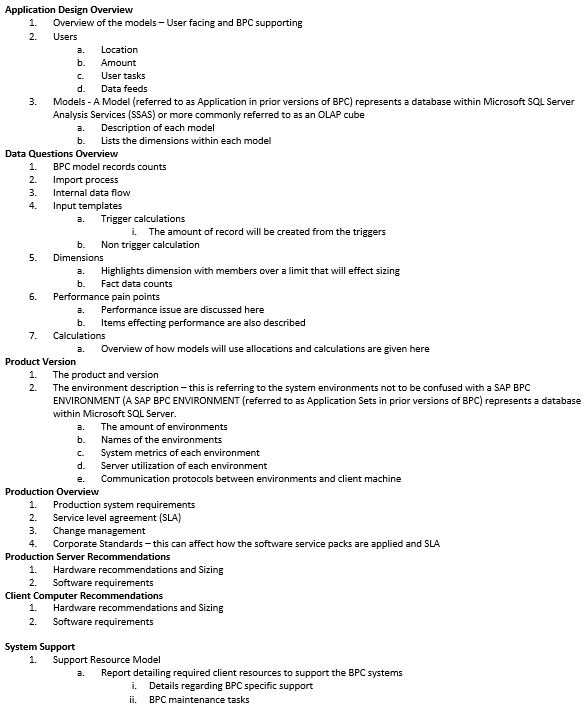
1. Landscape Design
I have been working with the BPC product since its inception in 2000. I am always surprised when clients have skipped or are not interested in what we refer to as a System Landscape Design. We take the functional design and/or what you are currently doing in the product to properly size the servers and client machines for the future use of BPC. If you skip this step, I believe there is no way you will get good performance!
When I started in the product, the widely accepted practice at the time was that the technical director would ask 3 questions on the phone and tell the customer the required hardware. I learned rather quickly that this was NOT the proper way to size the system, as almost every customer soon had performance issues.
To remove this potential outcome, since I came to Column5 in May 2008, I instituted Column5’s System Landscape Design process. We look at every aspect of how the product is being used, and give exact hardware and other requirements to have a well-performing and stable server/client environment. Are you getting the best performance out of your system? Did you do a System Landscape Design? Here is what’s included in the Column5 Technical Services version.

2. Installation
I agree that the installation is a very important aspect of the implementation, and therefore the final outcome with relation to system performance, but it is NOT the most important aspect. I have another blog about the difference between an Install Consultant and a Technical Consultant. Basically, a good installation is relatively easy to do, afterall we follow a checklist, and there are many who may be qualified to follow directions, even if they are rather complex. While there are a few items that will make a difference overall, following the directions will get the install done.
The most important aspect of the installation (I have performed over 1000 myself over the years) is to make sure all the underlying technology is correctly configured before installing BPC. Installing on a shakey technology foundation is like building your home’s foundation on sand. Not a good idea!
Another important step is to properly perform client testing; for instance, in a Load Balance environment you should test each server directly and through the load balance name. We don’t do client testing to test the client software. If there is a bug, I can only tell SAP about it and hope they fix it quickly. When we do client testing, we are really verifying that all the different aspects of the server configuration are correct. This would be the same for say, SQL or Analysis Services clustering. You should force a “failover” of every aspect of the clustered resources, not just “move” them to the other node(s).
Look for an upcoming blog post with the rest of my 5 tips to get good performance from BPC 10.1!











